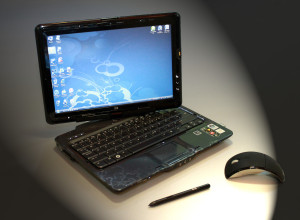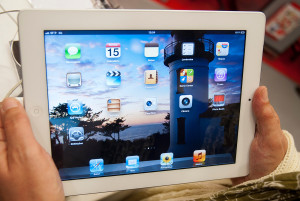Are Tablet Hybrids Really Worth The Investment?
With PC sales predicted to face yet another relentless assault from the mobile device market this year, many retail-savvy consumers are pondering the value of hybrid computer technology. Claiming to offer a 2-in-1 solution, the tablet hybrid market is being heralded as the ‘best of both worlds‘ by both manufacturers and computer retailers up and down the UK. However, with hybrids possessing neither the speed and functionality of standard desktop computers nor the convenience and accessibility of tablets, just what exactly do hybrid computers have to offer?
Having spent a considerable amount of time testing out one of these devices I feel I can honestly conclude: they aren’t quite there. Yet. Truth be told, during my first several hours with the ACER Aspire V5-122P 11.6″ Touchscreen Laptop I encountered a litany of problems which seriously mired my enjoyment of the device; such as regular freezing of the touchscreen, software crashes, truly horrendous loading times and a wealth of smaller (but no less frustrating) niggles in the overall design of the user interface.
Granted, installation and setup was relatively straightforward – typical of what you might find on any PC and tablet available today. Unfortunately, It was not long after this point that I began to encounter a number of troublesome issues. There were often moments whilst exploring the device where the hybrid appeared to lock up under the weight of its own loading times, perhaps the result of a lacklustre pairing between a resource-heavy touchscreen and a comparatively weak processor (my model featuring a 1.0GHz AMD A4-1250 APU).
It will be immediately apparent to most, I’m sure, that this particular bit of kit is not designed for CPU intensive applications, placing the device more on par with most standard tablet computers you’ll find on the high street. It’s certainly not a suitable platform for playing computer games, as evidenced by my attempts to run even modestly demanding games running well into the single digits, despite adhering to the lowest possible settings afforded in the game.
On the plus side of things, however, these devices are available at a fairly broad range of prices, depending on the budgetry constraints of the consumer and their willingness to forgo raw computing strength for elegance and relative ease of use, akin to what you might find with a number of Apple products. There’s no denying that hybrids certainly look the part, given their surprisingly sleek design and slim, ergonomic aesthetic which surely works in their favour, for the most part.
It’s a difficult device to recommend at this stage, to be quite candid. There’s unquestionably potential here, especially when considered as an alternative to standard laptop computing which, in terms of functionality, has remained largely unchanged since the 1990s. As refinements to the technology will undoubtedly be made over the coming months and years we may start to see hybrids at the forefront of mobile computing for the forseeable future. However, in its current state, it leaves little to be desired.




